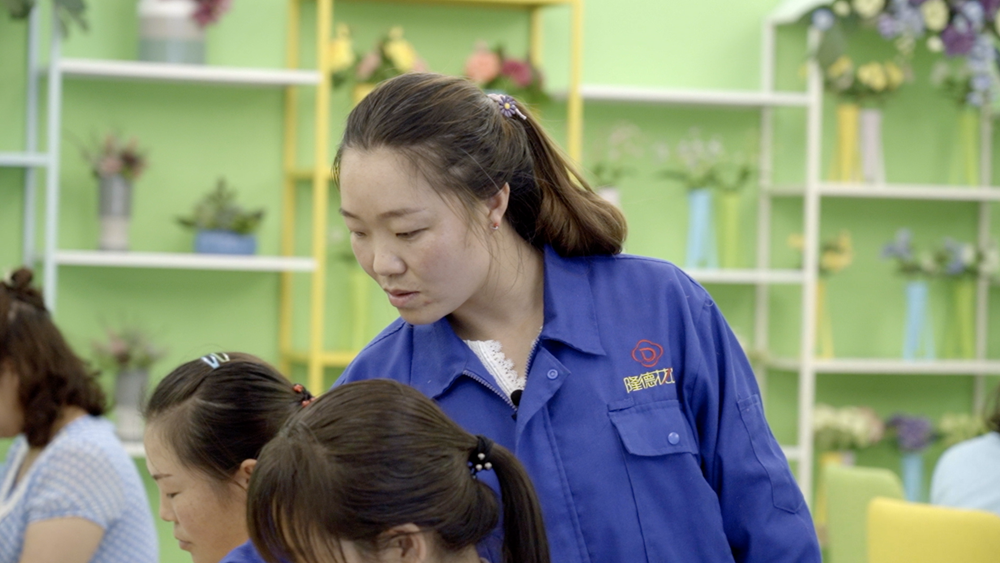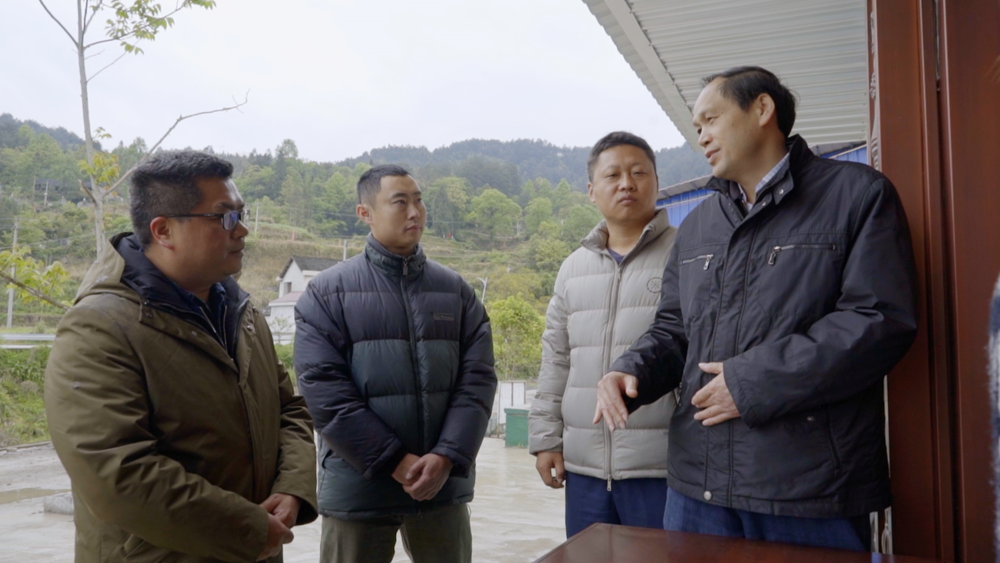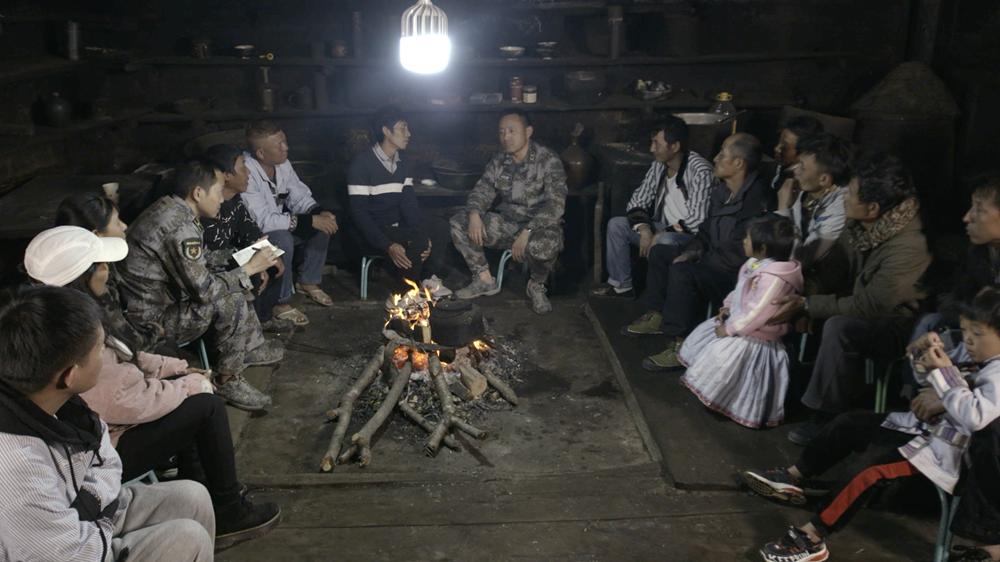05:15

Poverty alleviation is the common responsibility of the Communist Party of China (CPC) as well as the nation, and the whole society should be mobilized to participate in the national effort, said Chinese President Xi Jinping in southwest China's Guizhou Province on June 18, 2015.
Responding to the president's call, the central and local governments, public and private sectors as well as the ordinary people joined in the mission to eliminate absolute poverty by the end of 2020.
Here is an account of some of the measures taken by the nation as a whole to lift rural residents below the poverty line out of poverty.

A woman works at a poverty alleviation workshop in northwest China's Ningxia Hui Autonomous Region. /CMG
A woman works at a poverty alleviation workshop in northwest China's Ningxia Hui Autonomous Region. /CMG
East-west cooperation
Due to its natural conditions, regional development in China is imbalanced. All 832 counties designated by the government as poverty-stricken in 2014 were located in western and central China, while all nine provinces and municipalities along the country's eastern coast had no impoverished counties.
To narrow the gap between the more developed eastern regions and less developed western regions, China launched the "east-west pairing-off cooperation" in 1996. This involves industrial cooperation, human resource exchanges and financial assistance.
With more developed regions' help to less developed regions, the whole society finally will achieve common prosperity, said President Xi in Minning Town, northwest China's Ningxia Hui Autonomous Region on July 19, 2016.
Nine provinces and municipalities and 14 cities in the eastern region extended their hands to help 14 provinces, autonomous regions and cities in the western region. At the same time, 343 more developed counties in the eastern region paired with 573 impoverished counties in the west region to help them lift out of poverty.

Villagers talk to an official from the Ministry of Agriculture and Rural Affairs in Yongshun County, central China's Hunan Province. /CMG
Villagers talk to an official from the Ministry of Agriculture and Rural Affairs in Yongshun County, central China's Hunan Province. /CMG
Role of government organizations and SOEs
China began launching large-scale poverty alleviation projects in 1986. As many as 13 central government agencies, including the Ministry of Agriculture and Rural Affairs, became the first to help poverty-stricken regions with their own industry resource advantages.
For the purpose, the ministry dispatched personnel to Yongshun County, central China's Hunan Province. After conducting a research on local soil, the ministry personnel advised the locals to cultivate vine tea, which could prove as a lucrative business.
On January 17, 2020, the county announced the complete elimination of poverty. "Without the ministry's support, I wouldn't have been able to keep on with my business," said Xiang Yuping, who owns a tea company in Yongshun. "Now I have confidence to make my company bigger and stronger."
Moreover, 307 organizations from the CPC Central Committee and the central government helped 592 poverty-stricken counties get rid of poverty by the end of 2020.
Likewise, many state-owned enterprises (SOEs) also made their contributions in the nationwide fight against poverty. Since the 18th CPC National Congress in November 2012, the country has prioritized the power grid construction in impoverished areas nationwide.
Thanks to efforts from SOEs including China Anneng Construction Group Corp., all the rural areas under the national power grid got access to stable and reliable power supply services in 2020.

Soldiers talk with locals at Shawa Village in southwest China's Yunnan Province. /CMG
Soldiers talk with locals at Shawa Village in southwest China's Yunnan Province. /CMG
Military lends a hand
At old revolutionary bases, ethnic minority areas and border areas, the Chinese military has been carrying on the tradition of serving locals and helping them overcome poverty.
At a border village named Shawa in southwest China's Yunnan Province, locals used to grow corns for a living. However, due to the local landscape of sloping fields which often sees water and soil losses after plantation, corn plantation brought them mudslides and landslides instead of a decent living. In 2017, 75 percent of residents in the village lived in poverty.
Nujiang Subarea of Yunnan Provincial Military Area Command of the Chinese People's Liberation Army (PLA) dispatched some officials and soldiers to help the Shawa Village get out of poverty. They decided to initiate the fight against poverty through education. Soldiers taught children in the village to speak Mandarin and provided skills training for villagers to help them grow kiwi fruit in line with the local soil conditions.
The military not only invited agricultural experts to teach locals how to grow the fruit, but also broadened marketing channels for them to sell the fruit. The kiwi plantation has immensely expanded, and the village shook off poverty in December 2019.
Data shows that the PLA lifted 924,000 people in 4,100 villages out of poverty, enabling them to start brand-new lives.

Wang Pengyan talks with customers to sell local products on her mobile phone. /CMG
Wang Pengyan talks with customers to sell local products on her mobile phone. /CMG
Power of internet-plus
Internet-plus poverty alleviation is another major innovation in China's fight against poverty.
As part of the efforts, telecom operators, including China Mobile, accelerated steps in building base stations in impoverished districts.
"We checked the base stations constructions in all poverty-stricken counties and worked out tailored plans for each county," said Dong Xin, general manager of China Mobile. "All impoverished areas demanding network coverage now have access to China Mobile Network."
Data shows that only 25 percent of the deeply impoverished villages had broadband access in 2015, but the figure now touches 98 percent.
Powered by the internet, a model of rural e-commerce characterized by the sale of farm produce on online platforms such as Taobao has become a major channel for many impoverished areas to get out of poverty.
Wang Pengyan, a villager in Moba Village, Longnan City, northwest China's Gansu Province, got rid of poverty after selling local herbs online. With Wang's help, all the people in the village increased their income and got rid of poverty at the end of 2020.

